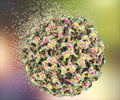Women who do not get the cervical cancer jab can see their risk of developing the disease half, owing to their peers who are immune to the disease as found in a typical evidence of herd protection.

"Infection with the types of HPV targeted by the vaccine decreased in vaccinated young women by 69 percent," Jessica Kahn, MD, MPH, a physician in the division of Adolescent Medicine at Cincinnati Children's and lead author of the study said.
"Two of these HPV types, HPV-16 and HPV-18, cause about 70 percent of cervical cancer. Thus, the results are promising in that they suggest that vaccine introduction could substantially reduce rates of cervical cancer in this community in the future."
The first HPV vaccine, which was licensed for use in the United States in June 2006, has been recommended for girls and women between the ages of 11 and 26 to reduce rates of HPV infection, which ultimately can lead to cervical cancer.
In 2006 and 2007, Dr. Kahn and team recruited 368 young women between the ages of 13 and 16 from two primary care clinics in the city of Cincinnati.
The young women had sexual contact but were not vaccinated. In 2009 and 2010, they recruited a different group of 409 young women in the same age range, more than 50 percent of whom had received at least one dose of the vaccine.
Advertisement
The prevalence of vaccine-type HPV was found to be decreased 58 percent overall, from 31.7 percent to 13.4 percent.
Advertisement
Dr. Kahn claimed that the decrease in vaccine-type HPV among vaccinated participants was "especially remarkable," given that participants were sexually experienced, many were exposed to vaccination-type HPV before vaccination, and only one dose of the vaccine was required to be considered vaccinated.
Dr. Kahn also emphasized that despite the evidence of herd immunity demonstrated in her study, vaccination of all young women between the ages of 11 and 26 is important to maximize the health benefits of vaccination.
This study has been published in the eFirst pages of Paediatrics.
Source-ANI















